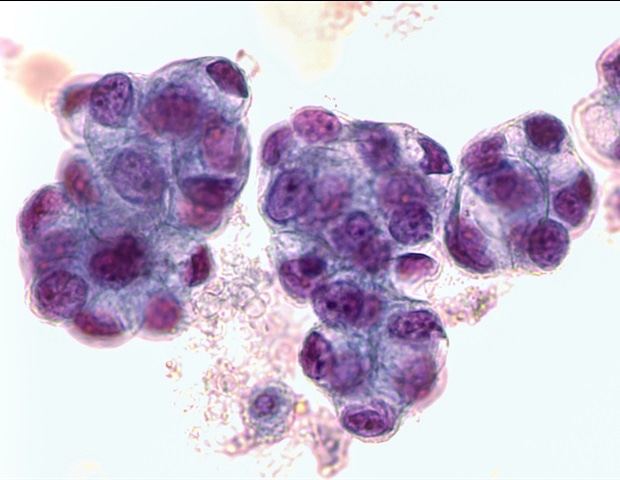
Scientists have developed a new approach to the diagnosis of adenocarcinoma - a malignant tumor of the prostate gland. Artificial intelligence is used to determine oncopathology and determine the stage of the disease with this approach. The scientific model with 100% accuracy distinguishes between healthy tissue and pathology.
The gold standard for the diagnosis of cancer is histology, during which tissue from a patient is examined for malignant changes. So that the samples can be stored for a long time, they are dehydrated and poured with paraffin. Then experts make thin sections and examine these “slides” using a microscope.
Typically, several people work with prostate biopsy specimens, after examining the sections, they make a collegial decision. The human factor cannot be canceled, therefore, due to subjective assessment, there are erroneous conclusions. We tried to solve this problem using IT technologies - we developed a computer model and, through machine learning, taught her how to detect abnormal areas using a tool such as terahertz spectroscopy."According to Yuri Kistenev, in the process of analysis, artificial intelligence not only detects the presence of cancer cells but also evaluates the tumor according to the Gleason score. It is traditionally used in the diagnosis of prostate cancer to determine the degree of malignancy of the process (indicators from 1 to 10), which is important in terms of predicting the course of the disease.
Yuri Kistenev, executive director of the TSU Institute of Biomedicine
"Using terahertz spectroscopy makes it possible to visualize a sample very well since a laser reads from 2500 to 4000 points in a small area," says Anastasia Knyazkova, one of the project executors. "In the process of training, a computer model was trained on samples of healthy and diseased tissue.
Thus, AI learned to separate the norm and pathology. A test of his ability to verify adenocarcinoma was carried out on that part of the samples that were not used in training. Assessment of the malignancy of the process was carried out for samples having a rating of 4 and 8 on the Gleason scale. The accuracy of the differential diagnosis was 100 percent."
Tomsk State University






No comments
Post a Comment